1. Essence cannot be lost.
The essence of a Tenmoku is that it is a teaware. If you want to get your hands on a Tenmoku, you must ensure that it meets the traditional characteristics of a Tenmoku: black glazed porcelain, iron foot, iron crystalline glaze, and produced in Jianyang are a few key features of Tenmoku.
1.Iron Content in the Body: The patterns on Tenmoku must be formed by the participation of iron in the body glaze, which precipitates into iron crystalline glaze patterns. As the saying goes, "No iron body, no Tenmoku."
- Firing Technique: The patterns on Tenmoku belong to iron crystalline glaze, which requires a high temperature of 1300°C and a reducing atmosphere. Not all kiln-fired glazes are iron crystalline glaze. For example, Jun kiln uses milky glaze with copper as the coloring agent. Here, we explain the concept of crystalline substance, which refers to a solid crystal formed by the orderly arrangement of atoms, ions, or molecules in a certain spatial order. According to testing and research, Tenmoku fired with proper techniques are safe and meet the national standards for daily-use ceramics.

- Eliminate Flawed Teapots.
After confirming that a teapot is an authentic Jian kiln Tenmoku, the next step is to carefully observe it and determine whether there are any flaws. Although in the Tenmoku industry, defective products are not allowed to enter the market and must be smashed and destroyed on the spot, there may still be some that accidentally leak out. If you buy a defective product at a normal price, you can imagine how you would feel. However, the craftsmanship of Tenmoku determines that some defects that are considered flaws in other ceramics are not considered flaws in Tenmoku. At this time, it is particularly important to distinguish which are the defects in Tenmoku and which are the common phenomena of Tenmoku.
The flaws of Tenmoku are mainly as follows:
- Cracks and deformations in the body of the teapot (slight ovalization of the mouth rim due to hand-pulling is acceptable and not considered deformation).
- Glaze defects including sticking to the kiln bottom, bubbling, warping, pinholes, glaze shrinkage, and glaze skipping.
In addition, it is important to note that dry lips and air holes are inevitable during the firing process of Tenmoku. If the degree is not severe, it is a reasonable phenomenon. Chipping and asymmetric glaze flow are also normal. The following will explain dry lips and air holes separately:
Dry Lips: During firing at high temperature, the glaze water flows downwards, causing the glaze at the mouth rim to be very thin. This leads to some degree of dry lips in Tenmoku. If the dry lips do not take up too much area, it is not considered a flaw. If the dry lips are too severe and have already damaged the integrity of the glaze or exposed the base color, it is not recommended to purchase.

Air Holes: If you look closely or use a magnifying glass, you will see that some Tenmoku have small holes on the glaze surface, and many tea lovers have questions about whether these small holes are considered flaws. In fact, the craftsmanship of Tenmoku determines that these small holes will appear in the finished product. As we all know, the body clay of Tenmoku uses clay with a high iron content, not kaolin used by other porcelain. Even talented craftsmen throughout history cannot completely eliminate the small holes on the surface, even if they have been well vitrified. However, they can make these air holes as small and as few as possible. Therefore, these small holes in Tenmoku are normal phenomena. They do not affect the aesthetics, nor do they affect normal use, so we should be tolerant of them.
- Judge whether it is suitable for oneself from the practical and personal aesthetic perspectives of Tenmoku.
After confirming whether it is an authentic Jian kiln Tenmoku and eliminating defective products, further selection can be made based on practical and personal aesthetic perspectives.
- Shape: Choose a Tenmoku that is the right size for yourself and conforms to ergonomics, and also looks pleasing to the eye. Tenmoku has traditional shapes such as bundle mouth, hat-shaped mouth, flared mouth, and constricted mouth, as well as new shapes such as lying heart, beauty cup, and general cup, all of which have their own fans. Generally, inward curved shapes are more difficult to fire than outward curved shapes (such as bundle mouth is more difficult than flared mouth). There are also larger, heavier teapots designed specifically for appreciation. The selection of this type of shape mainly depends on whether the glaze color meets personal preferences. Larger shapes are more prone to deformation and more difficult to reduce, resulting in a lower yield and a higher price for larger sizes.
- Patterns and Glaze Surface: Tenmoku's patterns exhibit a variety of changes, with the main types being as follows:
Wujin glaze should be black and pure, perfectly vitrified, and thick in glaze. There should be few impurities, but not too many. The presence of subtle silver filaments or silver droplets adds to its charm.
For the Rabbit Fur teapot, the straighter and clearer the fur filaments, the higher the quality. The best fur filaments are those with jade-like stripes, and the length and thickness depend on personal preference.
For the Oil Spot and Partridge Feather Tenmoku, the pattern particles need to be three-dimensional, oval-shaped, and have a metallic luster with active crystal distribution. The particles should be evenly distributed, and larger particles are more difficult to maintain an oval shape while smaller particles are easier to become round during firing.
Tea-dust glaze also comes in various colors: some tend towards yellow or brown, while others are more green or emerald, and there are also shades of grass green between yellow and green, as well as deep brown. Overall, the base glaze color is light and transparent, with a clear and perfectly vitrified tea-dust crystal structure and natural chipping. The base glaze color should transition from shallow to deep from the rim to the center of the bowl, with some gradual variations being the best.
The principles expressed in a few words may seem simple, but in reality, it is extremely difficult for each Tenmoku to achieve perfection in all aspects. Therefore, selection should be based on the level of difficulty. Glaze patterns > Vitrification > Dry Lips > Shape > Air Holes. For glaze patterns, color is more important than shape, with colorful and silver-blue/silver patterns being the best, while brown patterns are of lower quality.
Glaze patterns are the soul of Tenmoku, so they are the top priority. If the pattern is poorly expressed or does not look pleasing, even if the vitrification is perfect, it is not the Tenmoku in your heart, and other details can be ignored. If the pattern is beautiful and pleasing enough, slightly imperfect vitrification can be accepted. If you are fond of a Tenmoku that meets all the perfect conditions, the price will be surprisingly high. Because the craftsmanship of Tenmoku itself determines that the probability of producing a product with all the indicators perfect is too low, and rarity equals preciousness. In addition, the reputation, status, value, and scarcity of the craftsman's signature are also important references for the value of Tenmoku



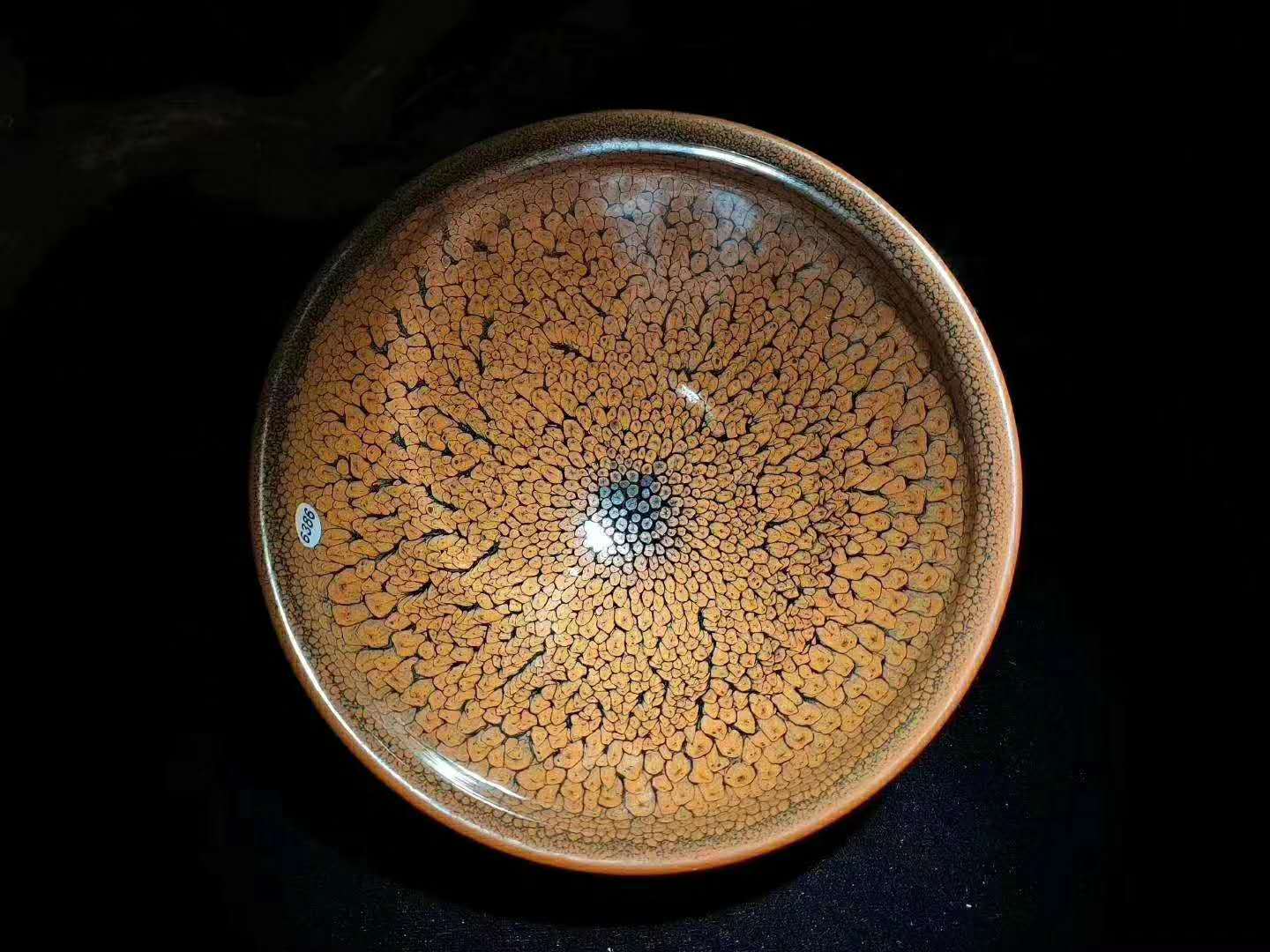
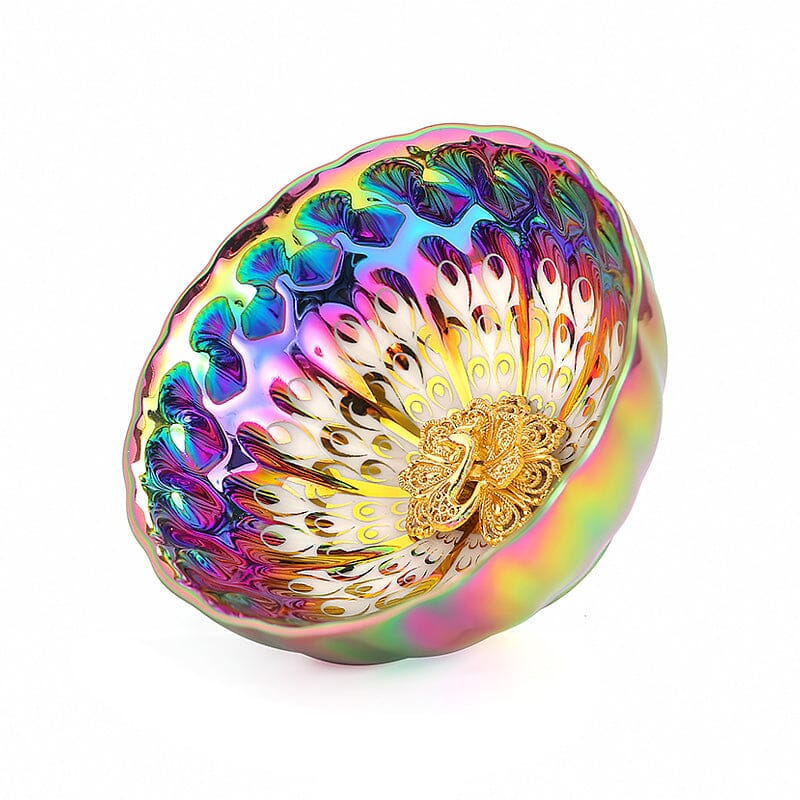
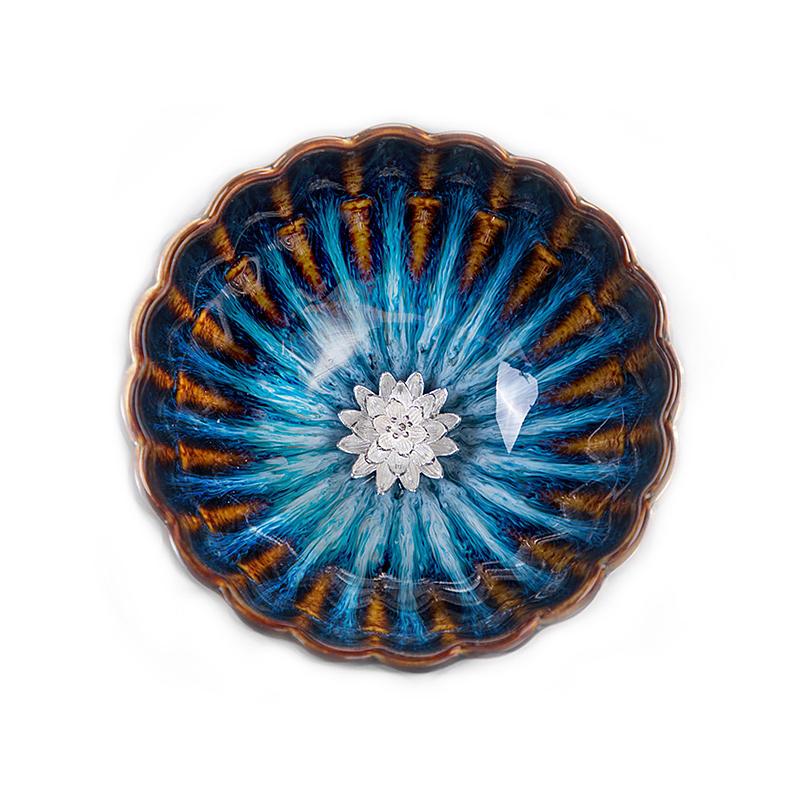
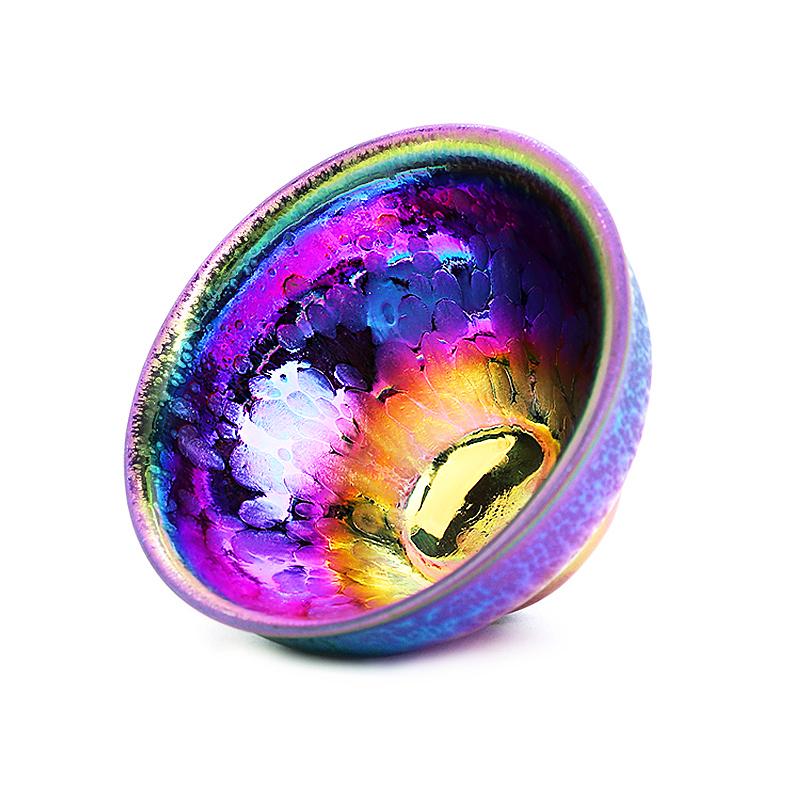
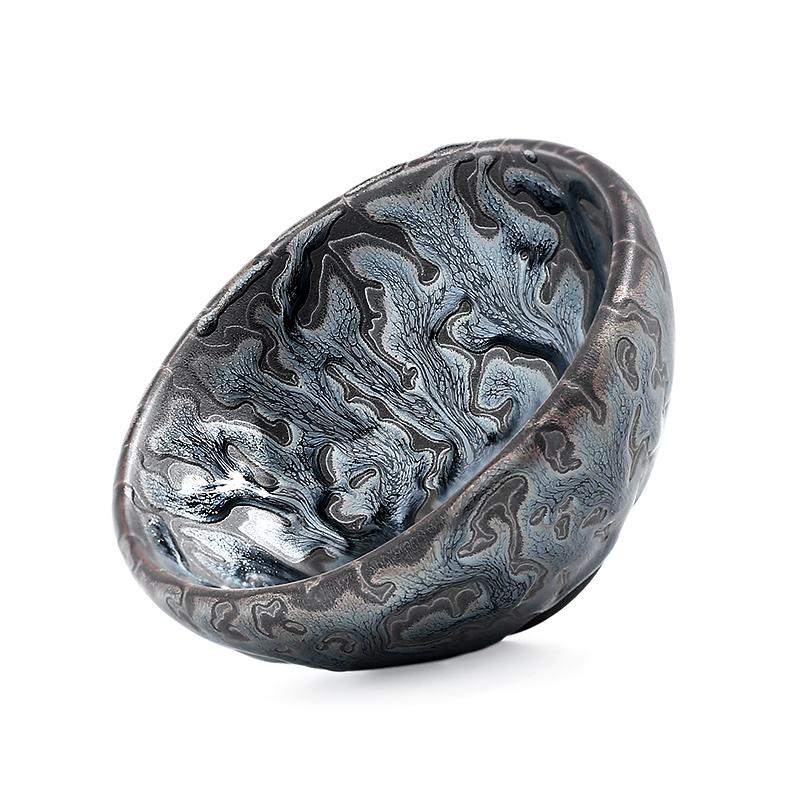
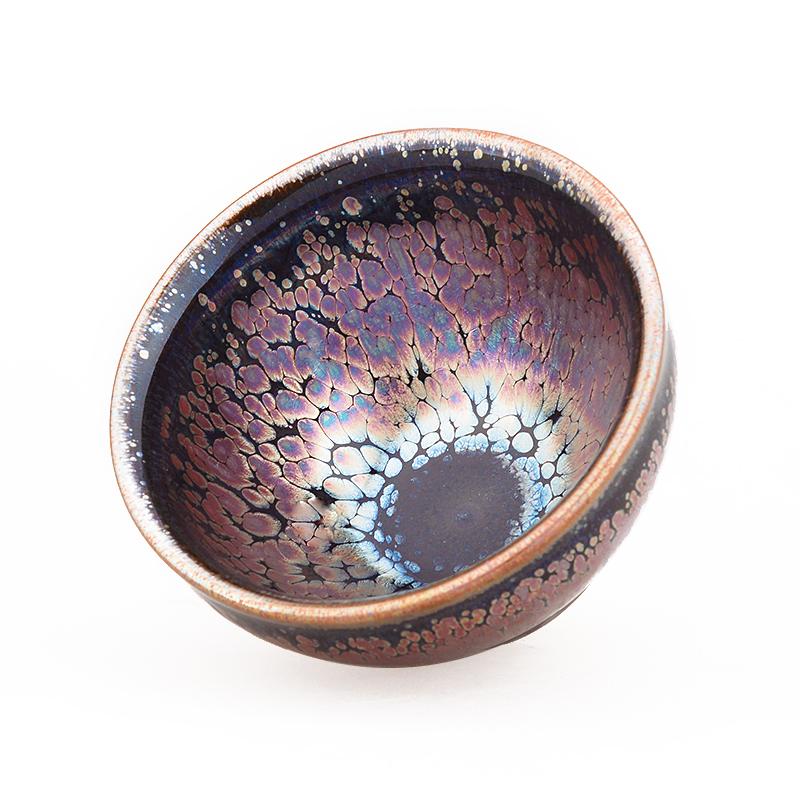
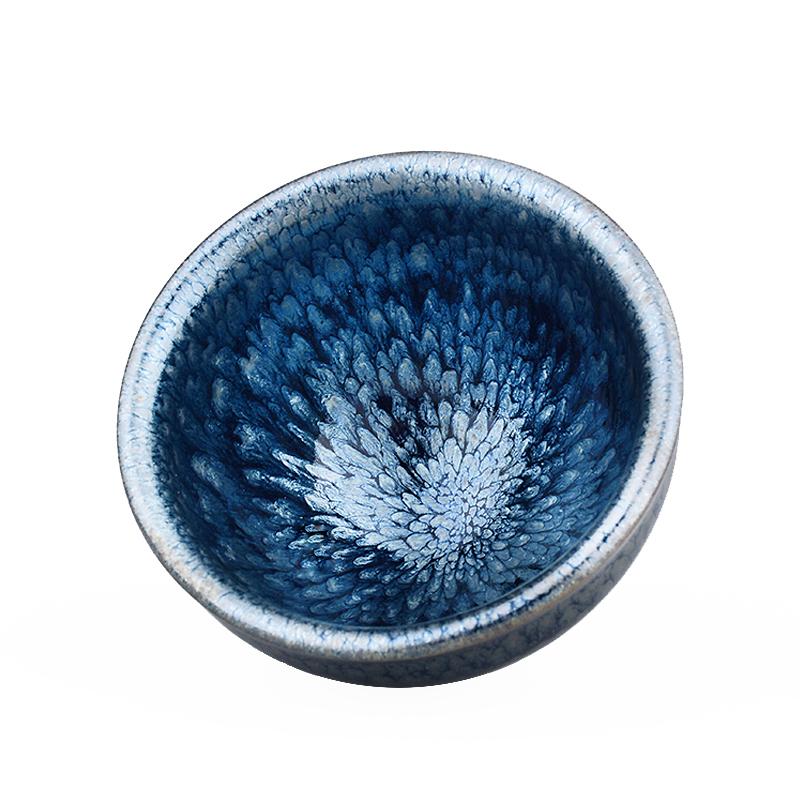
Share:
Choosing a Tenmoku teacup, only these few points matter!
Enthusiast Li Da restores lost 700-year-old Tenmokus